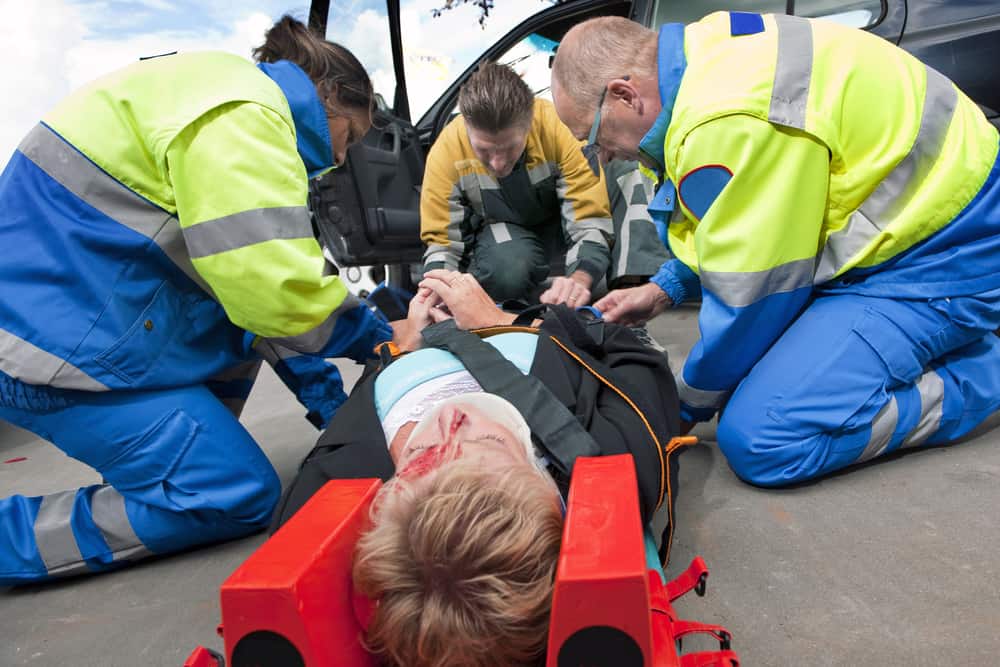
On the evening of July 14, the people of the French city of Nice gathered to celebrate Bastille Day, the day that commemorates the storming of the Bastille. The Bastille was a political prison and a symbol of royal authority and when it was taken in 1789, it marked a major turning point in the French Revolution. Over 30,000 of the city’s citizens gathered on the waterfront Promenade des Anglais to watch fireworks and an aerial display by the French Air Force. In preparation for the event, the Promenade des Anglais was closed to traffic to create a pedestrian only zone but, at approximately 10:30 PM, as the fireworks were ending, a white cargo truck emerged traveling eastbound on the road.
The white truck, traveling at close to 56 miles per hour and seemingly out of control, drove up onto the curb and struck multiple pedestrians. It maneuvered around a police car and a crowd control barrier that marked the beginning of the pedestrian zone. It then began to drive in a zigzag pattern in order to target random members of the crowd who were standing on the pavement and in the three closed traffic lanes. For the most part, the truck attempted to stay on the pavement in order to maximize the number of individuals struck and only returning to the road when a pavilion or bus shelter blocked their way.
When police arrived, the driver fired several shots at them and they returned fire as they chased the vehicle and attempted to disable it. Finally, badly damaged, the truck came to a halt next to the Palais de la Méditerranée where the driver was shot and killed by two national police officers. The attack had only lasted about five minutes but the carnage that it left in its wake was devastating. In the end, 86 people were killed, 10 of whom were children, and 432 were injured with 52 being listed as in critical condition.
Unfortunately, horrific terror attacks like this have become more and more common. In November of 2016, 11 students at Ohio State University were injured when a car was purposely rammed into a crowd. In that same year, a December attack killed 12 in Berlin, a March attack killed 5 in London, an April attack killed 4 in Sweden, and a June attack killed another 8 in London. In August, another car being used as a weapon in Barcelona killed 13 and injured 100 and in October in New York, near the World Trade Center, a truck driving down a bicycle path killed 8 and wounded 11. Due to their increasing frequency and potential to cause significant casualty and injury, it is important that EMS organizations be prepared to deal with these situations.
The white truck, traveling at close to 56 miles per hour and seemingly out of control, drove up onto the curb and struck multiple pedestrians. It maneuvered around a police car and a crowd control barrier that marked the beginning of the pedestrian zone. It then began to drive in a zigzag pattern in order to target random members of the crowd who were standing on the pavement and in the three closed traffic lanes. For the most part, the truck attempted to stay on the pavement in order to maximize the number of individuals struck and only returning to the road when a pavilion or bus shelter blocked their way.
When police arrived, the driver fired several shots at them and they returned fire as they chased the vehicle and attempted to disable it. Finally, badly damaged, the truck came to a halt next to the Palais de la Méditerranée where the driver was shot and killed by two national police officers. The attack had only lasted about five minutes but the carnage that it left in its wake was devastating. In the end, 86 people were killed, 10 of whom were children, and 432 were injured with 52 being listed as in critical condition.
Unfortunately, horrific terror attacks like this have become more and more common. In November of 2016, 11 students at Ohio State University were injured when a car was purposely rammed into a crowd. In that same year, a December attack killed 12 in Berlin, a March attack killed 5 in London, an April attack killed 4 in Sweden, and a June attack killed another 8 in London. In August, another car being used as a weapon in Barcelona killed 13 and injured 100 and in October in New York, near the World Trade Center, a truck driving down a bicycle path killed 8 and wounded 11. Due to their increasing frequency and potential to cause significant casualty and injury, it is important that EMS organizations be prepared to deal with these situations.
Vehicle Ramming Attacks
Stopping terror attacks using a vehicle has been a top concern for law enforcement agencies in both the United States and in Europe. These types of terror attacks have risen in popularity due to the fact that, compared to other methods, they require little organization, manpower, financial backing, or technological know-how. The Truck Renting and Leasing Association (TRALA), due to the risk of their vehicles being used in a vehicle ramming attack, detailed several challenges their industry faces in preventing these types of attacks:
These types of attacks are almost impossible to prevent but there are still things that EMS organizations and professionals can do to mitigate their destructive potential.
- Easy accessibility of vehicles
- Limited information on a customer’s background
- No predetermined or enforceable route structure
- Necessity for cash transactions
These types of attacks are almost impossible to prevent but there are still things that EMS organizations and professionals can do to mitigate their destructive potential.
Always Be Prepared
- Dispatchers for EMS services should be trained to identify patterns that might indicate a terror attack with a vehicle. For example, receiving numerous reports of hit and run accidents in the same area at the same time could be a sign of a deliberate attack. Any report in which multiple pedestrians are harmed by a vehicle should make you suspicious.
- Another tool that can help EMS dispatchers detect a possible vehicle attack is to ask those calling if the vehicle involved in the incident has stopped or if it is still moving. In the vast majority of events in which a car accidently strikes people, the driver will stop the car after realizing what has happened. If the attack is terror related, the car will only stop if it is too damaged to operate.
- If the report coming to the EMS dispatcher is suspicious for a vehicle attack, additional EMS personnel should be dispatched to the area to help treat the injured. The decision to send extra EMS crews may need to be made before a definite determination of what caused the event can be made.
- Once a vehicle attack has been identified, there should be pre-existing protocols in place that allow dispatchers to quickly alert the appropriate law enforcement personnel and relay information to them regarding a description of the vehicle used and the overall extent of the scene.
Scene Assessment
- Never forget that your primary focus at any scene you are called to is to keep you and your team safe. You will not be able to provide care to anyone if you are incapacitated, and the treatment of your injuries will cause medical resources to be diverted from where they are needed in other areas. Especially when entering a chaotic emergency, make sure the scene is safe before entering.
- Be prepared when you arrive on the scene that the attack may be ongoing even if the vehicle is no longer moving. In previous attacks, the vehicle driver has been armed with a knife, hand guns, machine guns, and explosive devices for use when their vehicle is disabled.
- These types of ramming attacks can often be spread over large distance. Dividing the total scene into sub-scenes and appointing scene commanders to oversee all operations within each sub-scene can help organize and better direct care in these chaotic situations. One method of dividing sub-scenes is by eyesight, meaning as far as their commander can see.
- Thoroughly check the vehicle once the scene is safe. Be sure to check inside the vehicle for any potential kidnap victims and under the vehicle for anyone trapped there.
- Check the area to determine if there are any second scenes. It is possible that someone calling to report the incident did not observe it from its beginning, which may mean that there are additional victims at other locations.
Things to Remember
- In a car ramming attack, most of the serious injuries suffered by people will be internal wounds. When doing triage at this type of scene, those who are lying on the ground unresponsive are probably those who have suffered the most life-threatening wounds.
- The distribution of injured persons in a vehicle ramming attack is very different then in other types of attacks. For example, when an explosive device is used, the further individuals are from where the bomb was detonated, the less serious their wounds are likely to be. However, in a car ramming attack, there is no way, based on location, you can predict where the most seriously injured individuals will be.
- Almost all vehicle ramming attacks seem like car accidents when they are initially reported. EMS dispatchers must be highly vigilant and know when a report sounds suspicions.
- Be mindful of what type of vehicle was used in the attack as this will serve to dictate what resources need to be directed to the area. Most vehicle ramming attacks utilize private civilian vehicles; however, there are reports of incidents involving tractors from construction sites and other heavy machinery.
Terror attacks using vehicles as weapons are becoming an increasing phenomenon across the world. These types of events are exceptionally difficult to prevent and with each successful attack, more individuals are inspired imitate them and future attacks become more likely. EMS organizations and professionals should continue to work to develop the systems, procedures, and skills needed to combat this ever-growing threat.
Resources and Further Reading
BBC, “Nice attack: What we know about the Bastille Day killings”
https://www.bbc.com/news/world-europe-36801671
CNN, “Terrorist Attacks by Vehicle Fast Facts” https://www.cnn.com/2017/05/03/world/terrorist-attacks-by-vehicle-fast-facts/index.html
JEMS, “EMS Preparation and Response for Car Ramming Attacks” https://www.jems.com/articles/2017/03/ems-preparation-and-response-for-car-ramming-attacks.html
Truck Renting and Leasing Association, “TRALA Security Awareness and Self-Assessment Guide” https://www.trala.org/content.asp?contentid=46
CNN, “Terrorist Attacks by Vehicle Fast Facts” https://www.cnn.com/2017/05/03/world/terrorist-attacks-by-vehicle-fast-facts/index.html
JEMS, “EMS Preparation and Response for Car Ramming Attacks” https://www.jems.com/articles/2017/03/ems-preparation-and-response-for-car-ramming-attacks.html
Truck Renting and Leasing Association, “TRALA Security Awareness and Self-Assessment Guide” https://www.trala.org/content.asp?contentid=46
By Jeremiah Johnson, MA, BS


